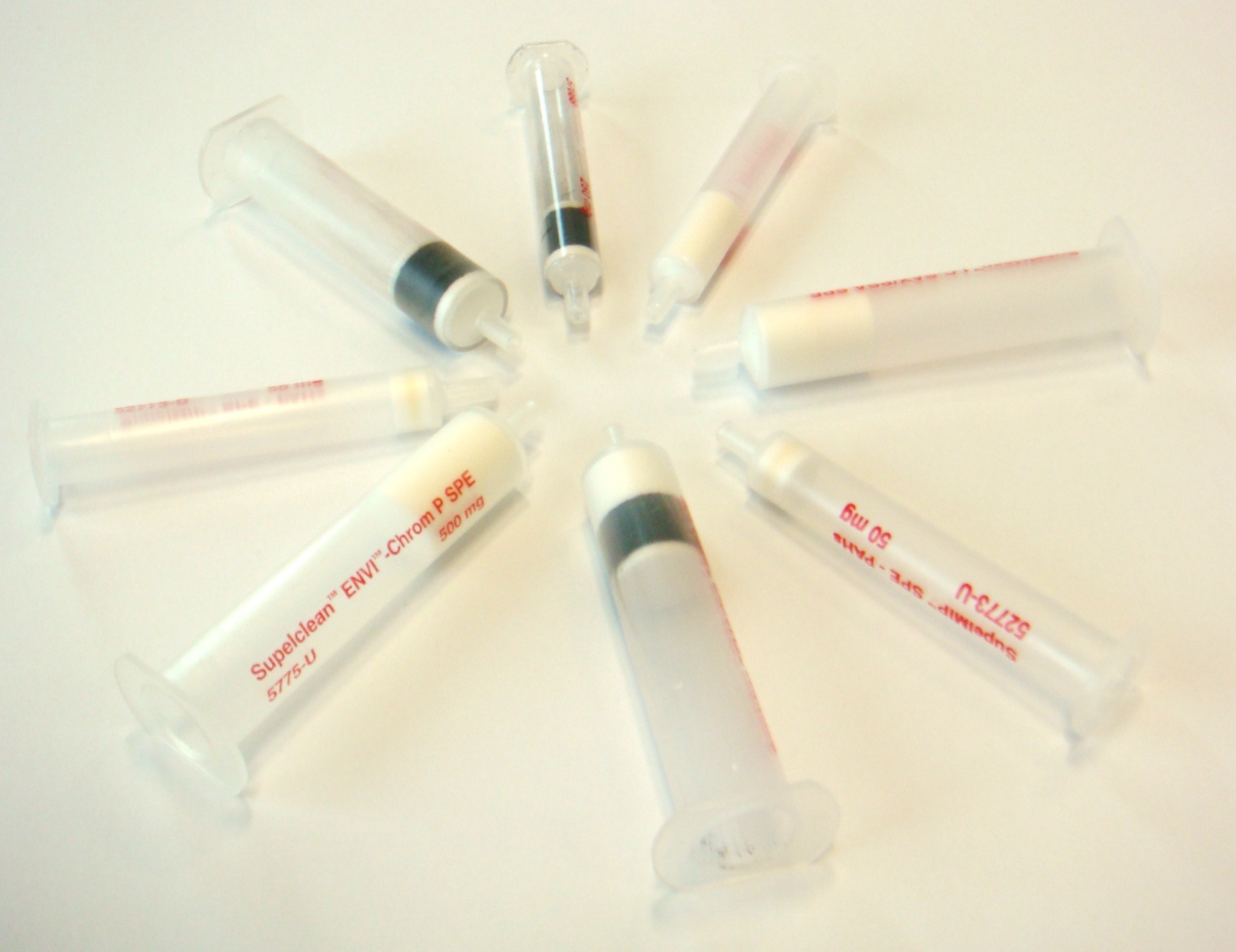推荐厂家
暂无
暂无
样品为复方维生素,其中一项是核黄素磷酸钠,没找到核黄素磷酸钠的对照品,故用的核黄素对照品样品制备:先用水溶,然后用流动相稀释,流动相弱酸性做出的结果比标示量低了很多啊用核黄素对照品代替核黄素磷酸钠对照品,请问结果可信吗?
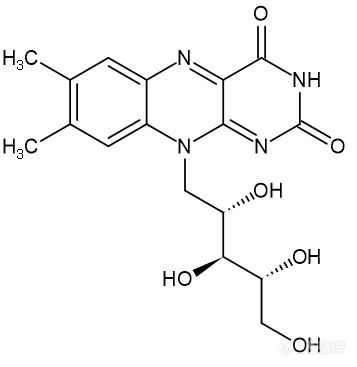
何莉萍CNS_08.148_核黄素[align=center][font='等线'][size=14px][color=#2e75b6]目录[/color][/size][/font][/align][font='等线'][size=14px]3[/size][/font][url=#][font='等线'][size=14px].[/size][/font][/url][url=#][font='等线'][size=14px]核黄素的物理性质[/size][/font][/url][url=#][font='等线'][size=14px]1[/size][/font][/url][url=#][font='等线'][size=14px]2[/size][/font][/url][font='等线'][size=14px]3[/size][/font][url=#][font='等线'][size=14px].[/size][/font][/url][url=#][font='等线'][size=14px]核黄素的光物理和光化学性质[/size][/font][/url][url=#][font='等线'][size=14px]第二章核黄素的生理功能[/size][/font][/url][url=#][font='等线'][size=14px]2[/size][/font][/url][url=#][font='等线'][size=14px]1[/size][/font][/url][font='等线'][size=14px]4[/size][/font][url=#][font='等线'][size=14px].[/size][/font][/url][url=#][font='等线'][size=14px]核黄素与铁代谢[/size][/font][/url][url=#][font='等线'][size=14px]2[/size][/font][/url][url=#][font='等线'][size=14px]3[/size][/font][/url][font='等线'][size=14px]5[/size][/font][url=#][font='等线'][size=14px].[/size][/font][/url][url=#][font='等线'][size=14px]核黄素与心血管疾病[/size][/font][/url][url=#][font='等线'][size=14px]第三章 核黄素的应用[/size][/font][/url][url=#][font='等线'][size=14px]3[/size][/font][/url][url=#][font='等线'][size=14px]1[/size][/font][/url][font='等线'][size=14px]5[/size][/font][font='等线'][size=14px]6[/size][/font][font='等线'][size=14px]6[/size][/font][font='等线'][size=14px]6[/size][/font][font='等线'][size=14px]6[/size][/font][font='等线'][size=14px]6[/size][/font][font='等线'][size=14px]7[/size][/font][url=#][font='等线'][size=14px].[/size][/font][/url][url=#][font='等线'][size=14px]微生物法[/size][/font][/url][url=#][font='等线'][size=14px]参考文献[/size][/font][/url] [font='等线'][size=14px]9[/size][/font][align=center][font='等线'][size=14px][color=#2e75b6]第一章 核黄素的理化性质[/color][/size][/font][/align][size=16px]核黄素是一种水溶性[/size][font='times new roman'][size=16px]B[/size][/font][size=16px]族维生素[/size][size=16px]。[/size][font='times new roman'][size=16px]1[/size][/font][font='times new roman'][size=16px]920[/size][/font][size=16px]年第[/size][font='times new roman'][size=16px]1[/size][/font][size=16px]次发现[/size][size=16px],[/size][font='times new roman'][size=16px]1[/size][/font][font='times new roman'][size=16px]933[/size][/font][size=16px]年第[/size][font='times new roman'][size=16px]1[/size][/font][size=16px]次从卵蛋白中分离出来[/size][size=16px],[/size][font='times new roman'][size=16px]1[/size][/font][font='times new roman'][size=16px]935[/size][/font][size=16px]年核黄素的化学结构被鉴定[/size][size=16px]。[/size][size=16px]核黄素是人体新陈代谢酶系统的一个组成部分[/size][size=16px],[/size][size=16px]也是生物生命活动中不可缺少的维生素之一[/size][size=16px],[/size][size=16px]与人体内碳水化合物[/size][size=16px]、[/size][size=16px]脂肪及氨基酸代谢有着密切的关系[/size][size=16px],[/size][size=16px]核黄素缺乏可以引起体内多种代谢障碍。[/size][font='等线'][size=14px][color=#2e75b6]1[/color][/size][/font][font='等线'][size=14px][color=#2e75b6].[/color][/size][/font][font='等线'][size=14px][color=#2e75b6]1[/color][/size][/font][font='等线'][size=14px][color=#2e75b6]核黄素的物理性质[/color][/size][/font][size=16px]水溶性维生素,但微溶于水,在[/size][font='times new roman'][size=16px]27.5℃[/size][/font][size=16px]下,溶解度为[/size][font='times new roman'][size=16px]12mg/100mL[/size][/font][size=16px]。可溶于氯化钠溶液,易溶于稀的氢氧化钠溶液,在碱性溶液中容易[/size][size=16px]分[/size][size=16px]解,在强酸溶液中稳定。耐热、耐氧化。光照及紫外照射引起不可逆的分解。[/size][font='等线'][size=14px][color=#2e75b6]1[/color][/size][/font][font='等线'][size=14px][color=#2e75b6].[/color][/size][/font][font='等线'][size=14px][color=#2e75b6]2[/color][/size][/font][font='等线'][size=14px][color=#2e75b6]核黄素的化学性质[/color][/size][/font][size=16px]分子式为[/size][font='times new roman'][size=16px]C[/size][/font][font='times new roman'][size=16px]17[/size][/font][font='times new roman'][size=16px]H[/size][/font][font='times new roman'][size=16px]20[/size][/font][font='times new roman'][size=16px]N[/size][/font][font='times new roman'][size=16px]4[/size][/font][font='times new roman'][size=16px]O[/size][/font][font='times new roman'][size=16px]6[/size][/font][size=16px],化学结构式见图[/size][font='times new roman'][size=16px]1[/size][/font][font='times new roman'][size=16px],具有一个核糖醇侧链的异咯嗪的衍生物。橙黄色晶体,[/size][/font][font='times new roman'][size=16px]280℃即熔化分解。在平常的湿度下稳定,而且不受空气中氧的影响。微溶于水,溶液呈现出强的黄绿色荧光。不溶于有机溶剂,在强酸溶液中稳定;在碱性条件下或者暴露于可见光或紫外线中时不稳定。食物中的核黄素很容易吸收,但单独服用,则只有15%的吸收率。核黄素在生物体储存量不多,多余的在尿液中排出,使尿液呈鲜黄色。核黄素在生物界分布极广,各种组织中均含有核黄素,广泛地分布在所有的叶菜,温血动物和鱼的肉中,但各种食物的含量相差很大,每[/size][/font][font='times new roman'][size=16px]一[/size][/font][font='times new roman'][size=16px]百[/size][/font][font='times new roman'][size=16px]克[/size][/font][font='times new roman'][size=16px]食物含量低的只有0.01mg,高的可[/size][/font][font='times new roman'][size=16px]达[/size][/font][font='times new roman'][size=16px]3.5mg,以肝脏含量最高,浅色蔬菜和薯类含量最低。[/size][/font][align=center][img]https://ng1.17img.cn/bbsfiles/images/2021/07/202107251438050080_5202_1608728_3.png[/img][/align][align=center][size=13px]图[/size][font='times new roman'][size=13px]1[/size][/font][size=13px]核黄素的化学结构[/size][/align][font='等线'][size=14px][color=#2e75b6]1[/color][/size][/font][font='等线'][size=14px][color=#2e75b6].[/color][/size][/font][font='等线'][size=14px][color=#2e75b6]3[/color][/size][/font][font='等线'][size=14px][color=#2e75b6]核黄素的光物理和光化学性质[/color][/size][/font][font='arial'][size=16px]在生物学上,核黄素具有重要作用,如:向光性,趋光性和光治疗,其本身又是一类重要的光敏化剂[/size][/font][font='arial'][size=16px][[/size][/font][font='times new roman'][size=16px]1[/size][/font][font='arial'][size=16px]][/size][/font][font='arial'][size=16px],研究表明这些重要的光生物学过程大多与核黄素的激发态有关。由于核黄素的吸收波段很宽(从紫外到可见光)且系间窜越的量子产额较高([/size][/font][font='times new roman'][size=16px]Φ[/size][/font][font='times new roman'][size=16px]ISC[/size][/font][font='arial'][size=16px]=[/size][/font][font='times new roman'][size=16px]0[/size][/font][font='arial'][size=16px].[/size][/font][font='times new roman'][size=16px]67[/size][/font][font='arial'][size=16px])[/size][/font][font='arial'][size=16px][[/size][/font][font='times new roman'][size=16px]2[/size][/font][font='arial'][size=16px]][/size][/font][font='arial'][size=16px],故无论在生物体内还是体外的组织和器官,只要能透过光,就能激发产生激发态,并与细胞内的[/size][/font][font='times new roman'][size=16px]DNA[/size][/font][font='arial'][size=16px]或其他组分发生反应,导致细胞死亡或加速衰老[/size][/font][font='arial'][size=16px][[/size][/font][font='times new roman'][size=16px]3[/size][/font][font='arial'][size=16px]][/size][/font][font='arial'][size=16px]。[/size][/font][font='arial'][size=16px]研究发现,核黄素在[/size][/font][font='times new roman'][size=16px]337nm[/size][/font][font='arial'][size=16px]激光作用下,可产生激发三重态;而在[/size][/font][font='times new roman'][size=16px]248nm[/size][/font][font='arial'][size=16px]激光作用下,既可产生激发三重态,又可生成氧化性自由基,核黄素氧化性自由基比激发三重态具有更强的氧化性[/size][/font][font='arial'][size=16px][[/size][/font][font='times new roman'][size=16px]4[/size][/font][font='arial'][size=16px]][/size][/font][font='arial'][size=16px]。[/size][/font][font='等线'][size=14px][color=#2e75b6]第二章核黄素的生理功能[/color][/size][/font][font='等线'][size=14px][color=#2e75b6]2[/color][/size][/font][font='等线'][size=14px][color=#2e75b6].[/color][/size][/font][font='等线'][size=14px][color=#2e75b6]1[/color][/size][/font][font='等线'][size=14px][color=#2e75b6]核黄素与生长发育[/color][/size][/font][size=16px]核黄素为机体健康和正常生长所必需,其形成的辅酶是许多氧化酶系统不可缺少的组成部分,在生物氧化过程中参与氢的传递,促进碳水化合物,蛋白质,脂肪,核酸的代谢。其缺乏可产生一些重要的影响,其中最主要的是生长障碍。杨焕民等人以[/size][font='times new roman'][size=16px]1[/size][/font][size=16px]日龄大鼠作实验时发现,低温下补充适量核黄素有利于生长激素和胰岛素的分泌,从而有利于生长;且通过增加肾上腺皮质束状带宽度及束状带和髓质细胞数,降低血清[/size][font='times new roman'][size=16px]T3[/size][/font][font='times new roman'][size=16px]、[/size][/font][font='times new roman'][size=16px]T4[/size][/font][size=16px]皮质醇水平,促进机体冷适应[/size][size=16px],[/size][font='arial'][size=16px]提高机体耐寒力。因此耐寒环境下适量补加核黄素有利于动物的生长[/size][/font][font='arial'][size=16px][[/size][/font][font='times new roman'][size=16px]5[/size][/font][font='arial'][size=16px]][/size][/font][font='arial'][size=16px]。人体研究也得出相应的结论[/size][/font][font='arial'][size=16px][[/size][/font][font='times new roman'][size=16px]6[/size][/font][font='arial'][size=16px],[/size][/font][font='times new roman'][size=16px]7[/size][/font][font='arial'][size=16px]][/size][/font][font='arial'][size=16px]:孕期核黄素摄入量与新生儿出生体重呈正相关,强化核黄素的食品能有效地改善小学生营养状况和促进其生长发育。[/size][/font][font='等线'][size=14px][color=#2e75b6]2[/color][/size][/font][font='等线'][size=14px][color=#2e75b6].[/color][/size][/font][font='等线'][size=14px][color=#2e75b6]2[/color][/size][/font][font='等线'][size=14px][color=#2e75b6]核黄素与铁代谢[/color][/size][/font][font='arial'][size=16px]核黄素的缺乏将导致人和动物铁吸收、储存、利用降低,其机制可能通过影响体内[/size][/font][font='times new roman'][size=16px]NAD[/size][/font][font='arial'][size=16px]-[/size][/font][font='times new roman'][size=16px]FMN[/size][/font][font='arial'][size=16px]氧化还原酶而起作用,核黄素缺乏时引起人和动物生长停滞,因而铁缺乏的同时,核黄素的严重缺乏将抑制儿童和幼龄动物对铁的需求,从而掩盖肌体铁的缺乏。因此,无论治疗核黄素缺乏病还是缺铁性贫血,同时补充铁和核黄素都是有益的[/size][/font][font='arial'][size=16px][[/size][/font][font='times new roman'][size=16px]8[/size][/font][font='arial'][size=16px]][/size][/font][font='arial'][size=16px]。[/size][/font][font='arial'][size=16px]国内外大量的动物实验表明,核黄素缺乏可能通过影响小肠中[/size][/font][font='times new roman'][size=16px]NADH[/size][/font][font='arial'][size=16px]-[/size][/font][font='times new roman'][size=16px]FMN[/size][/font][font='arial'][size=16px]氧化还原酶(即铁蛋白还原酶)活力而参与铁代谢[/size][/font][font='times new roman'][size=16px][6][/size][/font][font='arial'][size=16px],即核黄素缺乏可能影响到体内铁的吸收,从而导致缺铁性贫血[/size][/font][font='times new roman'][size=16px](IDA)[/size][/font][font='arial'][size=16px]发生率的增多。人群调查证实,核黄素缺乏者的平均血红蛋白量[/size][/font][font='times new roman'][size=16px](Hb)[/size][/font][font='arial'][size=16px]与血清铁蛋白([/size][/font][font='times new roman'][size=16px]SF[/size][/font][font='arial'][size=16px])浓度均低于正常者,且其贫血率及缺铁率高于核黄素营养状况正常者,全血谷胱甘肽还原酶活性系数与[/size][/font][font='times new roman'][size=16px]Hb[/size][/font][font='arial'][size=16px]、[/size][/font][font='times new roman'][size=16px]SF[/size][/font][font='arial'][size=16px]均呈负相关[/size][/font][font='times new roman'][size=16px][9][/size][/font][font='times new roman'][size=16px]。[/size][/font][font='arial'][size=16px]在核黄素与铁同时缺乏的研究中,动物实验表明,核黄素缺乏对缺铁大鼠的铁状况不但不进一步协同加速恶化,相反起一定程度的缓解作用[/size][/font][font='arial'][size=16px][[/size][/font][font='times new roman'][size=16px]8[/size][/font][font='arial'][size=16px]][/size][/font][font='arial'][size=16px]。[/size][/font][font='arial'][size=16px]其[/size][/font][font='arial'][size=16px]原因可能是核黄素与铁同时缺乏时,核黄素缺乏因明显地抑制了大鼠的生长,使体重增长缓慢、血容量扩充不明显,使机体对铁的需求相对降低,即核黄素缺乏对铁状况有“节约效应”。而单纯缺铁时,体重增长抑制远不如核黄素和铁同时缺乏时明显,血容量仍大量扩充,机体对铁的需求大,饲料又缺铁,就易出现铁营养状况的恶化。因此,二者同时缺乏时,核黄素缺乏通过其对生长的抑制作用而掩盖铁状况的恶化。[/size][/font][font='等线'][size=14px][color=#2e75b6]2[/color][/size][/font][font='等线'][size=14px][color=#2e75b6].[/color][/size][/font][font='等线'][size=14px][color=#2e75b6]3[/color][/size][/font][font='等线'][size=14px][color=#2e75b6]核黄素与癌[/color][/size][/font][font='arial'][size=16px]大量的流行病学和动物实验资料表明,核黄素等微量营养素具有防癌和抗癌作用。据调查发现[/size][/font][font='arial'][size=16px]:[/size][/font][font='arial'][size=16px]伊朗[/size][/font][font='arial'][size=16px]、[/size][/font][font='arial'][size=16px]中国等地居民因核黄素缺乏或严重摄入不足导致慢性食道炎普遍存在或食管癌区域高发[/size][/font][font='times new roman'][size=16px][10][/size][/font][font='arial'][size=16px]。林英等研究也证实:补充核黄素组的食管癌前病人的食管上皮细胞增生转换的好转率和稳定率明显高于安慰剂组。可见核黄素可抑制食管上皮增生或促进其向正常转化[/size][/font][font='arial'][size=16px][[/size][/font][font='times new roman'][size=16px]11[/size][/font][font='arial'][size=16px]][/size][/font][font='arial'][size=16px]。除影响上皮组织完整性外,核黄素还有抗突变作用,经[/size][/font][font='times new roman'][size=16px]Ames[/size][/font][font='arial'][size=16px]试验检测,核黄素是黄曲霉毒素[/size][/font][font='times new roman'][size=16px]B1[/size][/font][font='arial'][size=16px]突变剂的很有效的拮抗物[/size][/font][font='arial'][size=16px][[/size][/font][font='times new roman'][size=16px]12[/size][/font][font='arial'][size=16px]][/size][/font][font='arial'][size=16px] 周纯先[/size][/font][font='arial'][size=16px][[/size][/font][font='times new roman'][size=16px]13[/size][/font][font='arial'][size=16px]][/size][/font][font='arial'][size=16px]指出:小鼠腹腔注射核黄素[/size][/font][font='times new roman'][size=16px]1[/size][/font][font='arial'][size=16px].[/size][/font][font='times new roman'][size=16px]0mg[/size][/font][font='arial'][size=16px]/[/size][/font][font='times new roman'][size=16px]kg[/size][/font][font='arial'][size=16px]以上及饮水含核黄素[/size][/font][font='times new roman'][size=16px]10mg[/size][/font][font='arial'][size=16px]/[/size][/font][font='times new roman'][size=16px]L[/size][/font][font='arial'][size=16px]时,可显著降低[/size][/font][font='times new roman'][size=16px]HgCl2[/size][/font][font='arial'][size=16px]致小鼠微核作用 随后李建端等以大鼠作实验时发现,在[/size][/font][font='times new roman'][size=16px]RPMI1640[/size][/font][font='arial'][size=16px]培养基中添加核黄素([/size][/font][font='times new roman'][size=16px]26[/size][/font][font='arial'][size=16px]~[/size][/font][font='times new roman'][size=16px]130μmol[/size][/font][font='arial'][size=16px]/[/size][/font][font='times new roman'][size=16px]L[/size][/font][font='arial'][size=16px])可显著抑制甲基苄基亚硝胺([/size][/font][font='times new roman'][size=16px]MBNA[/size][/font][font='arial'][size=16px])的致细胞突变作用[/size][/font][font='arial'][size=16px][[/size][/font][font='times new roman'][size=16px]14[/size][/font][font='arial'][size=16px]][/size][/font][font='arial'][size=16px]。[/size][/font][font='等线'][size=14px][color=#2e75b6]2[/color][/size][/font][font='等线'][size=14px][color=#2e75b6].[/color][/size][/font][font='等线'][size=14px][color=#2e75b6]4[/color][/size][/font][font='等线'][size=14px][color=#2e75b6]核黄素与心血管疾病[/color][/size][/font][font='arial'][size=16px]核黄素通过黄素辅酶参与机体的生物氧化还原反应,抑制脂质过氧化,减少自由基的生成,保护心血管系统免受氧化损伤。而核黄素缺乏会激发细胞凋亡,造成正常细胞损伤,削弱了机体的抗氧化能力。研究表明,氧化应激的过度和机体抗氧化能力的不足是心血管疾病和其他疾病的发病机制之一[/size][/font][font='arial'][size=16px][[/size][/font][font='times new roman'][size=16px]15[/size][/font][font='arial'][size=16px]][/size][/font][font='arial'][size=16px]。单细胞凝胶电泳实验显示,冠状动脉疾病患者与正常健康者对照比较[/size][/font][font='times new roman'][size=16px]DNA[/size][/font][font='arial'][size=16px]损伤程度显著升高,而且损伤程度与总抗氧化能力呈负相关。冠心病患者总抗氧化能力下降,[/size][/font][font='times new roman'][size=16px]DNA[/size][/font][font='arial'][size=16px]损伤增加,而且[/size][/font][font='times new roman'][size=16px]DNA[/size][/font][font='arial'][size=16px]损伤增加与年龄相关的抗氧化酶减少和修复能力的下降有关。核黄素作为抗氧化剂,可能有助于保护[/size][/font][font='times new roman'][size=16px]DNA[/size][/font][font='arial'][size=16px]免于受损。刘秀玲等[/size][/font][font='times new roman'][size=16px][16][/size][/font][font='arial'][size=16px]报道,适宜浓度的核黄素能降低过氧化氢诱导的[/size][/font][font='times new roman'][size=16px]DNA[/size][/font][font='arial'][size=16px]氧化损伤。殷慧群[/size][/font][font='arial'][size=16px]等[/size][/font][font='times new roman'][size=16px][17][/size][/font][font='arial'][size=16px]研究证明,[/size][/font][font='arial'][size=16px]通过核黄素干预后[/size][/font][font='arial'][size=16px],有助于保护冠状动脉血管内皮,维持内皮功能的完整性[/size][/font][font='arial'][size=16px]。[/size][/font][font='arial'][size=16px]综上所述,核黄素是机体必需微量营养素之一,具有广泛的生理功能,世界卫生组织([/size][/font][font='times new roman'][size=16px]WTO[/size][/font][font='arial'][size=16px])将其列为评价人体生长发育和营养状况六大指标之一。但我国人均每日摄取入核黄素([/size][/font][font='times new roman'][size=16px]VB2[/size][/font][font='arial'][size=16px])不足[/size][/font][font='times new roman'][size=16px]0[/size][/font][font='arial'][size=16px].[/size][/font][font='times new roman'][size=16px]8[/size][/font][font='arial'][size=16px]尤见于儿童、青少年、孕妇,。因此,正确引导儿童的食物消费,优化膳食模式,增加富含核黄素等一些微量营养素食物的摄入,如:动物内脏,奶类,蛋类,豆制品及蔬菜,并对缺乏者采用适宜的干预措施和核黄素药物治疗,仍是当前营养工作中的一个重要环节。[/size][/font][font='等线'][size=14px][color=#2e75b6]第三章 核黄素的应用[/color][/size][/font][font='等线'][size=14px][color=#2e75b6]3[/color][/size][/font][font='等线'][size=14px][color=#2e75b6].[/color][/size][/font][font='等线'][size=14px][color=#2e75b6]1[/color][/size][/font][font='等线'][size=14px][color=#2e75b6] 核黄素与放射性黏膜炎[/color][/size][/font][font='等线'][size=14px][color=#2e75b6] [/color][/size][/font][font='arial'][size=16px]肿瘤患者在放疗、化疗过程中容易出现口腔黏膜炎、肠黏膜炎、胃溃疡等,严重时可导致全身性感染,危及生命。对于中晚期鼻咽癌,同期放化疗已经成为标准的治疗模式。然而同期放化疗在杀伤肿瘤细胞的同时也造成对正常组织的损伤,尤其是黏膜炎加重,降低了部分患者的耐受性,增加了患者的痛苦。在实际临床工作中也可能因为耐受性的问题而调整治疗强度,中断、甚至停止治疗。因此在治疗期间防治黏膜炎已成为鼻咽癌同期放化疗过程中面临的主要问题之一。[/size][/font][font='arial'][size=16px]核黄[/size][/font][font='arial'][size=16px]素类药物对治疗黏膜炎和口腔溃疡有较好的疗效[/size][/font][font='times new roman'][size=16px][[/size][/font][font='times new roman'][size=16px]18[/size][/font][font='times new roman'][size=16px],1[/size][/font][font='times new roman'][size=16px]9[/size][/font][font='times new roman'][size=16px]][/size][/font][font='arial'][size=16px]。蒋秀美等[/size][/font][font='times new roman'][size=16px][[/size][/font][font='times new roman'][size=16px]20][/size][/font][font='arial'][size=16px]报道,核黄素可用于预防造血干细胞移植后口腔黏膜炎,使黏膜炎损伤程度减轻,恢复时间比较快。[/size][/font][font='arial'][size=16px]核黄素缺乏间接地削弱了机体的抗氧化功能,而补充核黄素则可能增加机体的抗氧化功能,从而可以很好地预防黏膜炎和口腔溃疡,提高了放疗、化疗患者的耐受力[/size][/font][font='times new roman'][size=16px][21][/size][/font][font='times new roman'][size=16px]。[/size][/font][font='等线'][size=14px][color=#2e75b6]3.2 核黄素与秋季腹泻[/color][/size][/font][font='arial'][size=16px]秋季腹泻是儿科最常见的疾病之一,估计我国[/size][/font][font='times new roman'][size=16px]5[/size][/font][font='arial'][size=16px]岁以下小儿中腹泻病平均 每年[/size][/font][font='times new roman'][size=16px]2[/size][/font][font='arial'][size=16px].[/size][/font][font='times new roman'][size=16px]5[/size][/font][font='arial'][size=16px]次/人,而秋季腹泻占[/size][/font][font='times new roman'][size=16px]87%[/size][/font][font='times new roman'][size=16px],[/size][/font][font='arial'][size=16px]主要病原是轮状病毒。临床应用核黄素治疗小儿腹泻,增加了机体的抗氧化功能,使肠黏膜细胞得到快速修复,从而使其吸收和分泌功能恢复正常[/size][/font][font='times new roman'][size=16px][21][/size][/font][font='arial'][size=16px]。[/size][/font][font='等线'][size=14px][color=#2e75b6]3.3 核黄素与烧伤[/color][/size][/font][font='arial'][size=16px] [/size][/font][font='arial'][size=16px] [/size][/font][font='arial'][size=16px]核黄素是一种可用于中小面积烧伤创面的安全、有效的外用药。大面积烧伤的患者长时间大剂量应用抗生素[/size][/font][font='arial'][size=16px], 可诱发核黄素缺乏, 最终导致真菌感染加重, 辅以核黄素治疗有利于防止真菌感染[/size][/font][font='arial'][size=16px]。其机制可能是核黄素参与了生物氧化作用和机体三大代谢过程[/size][/font][font='arial'][size=16px], 足量的核黄素使体内酸性物质减少, 不利于真菌生长, 从而使患者不易发生真菌感染[/size][/font][font='times new roman'][size=16px][21][/size][/font][font='arial'][size=16px]。[/size][/font][font='等线'][size=14px][color=#2e75b6]3.4 [/color][/size][/font][font='等线'][size=14px][color=#2e75b6]核黄素与心血管疾病[/color][/size][/font][font='arial'][size=18px] [/size][/font][font='arial'][size=18px] [/size][/font][font='arial'][size=16px]核黄素类药物对患者心脏功能有一定的改善作用[/size][/font][font='arial'][size=16px], 核黄素通过黄素辅酶参与机体的生物氧化还原反应, 抑制脂质过氧化, 减少自由基的生成, 保护心血管系统免受氧化损伤。[/size][/font][font='arial'][size=16px]而核黄素缺乏会激发细胞凋亡[/size][/font][font='arial'][size=16px], 造成正常细胞损伤, 削弱了机体的抗氧化能力[/size][/font][font='times new roman'][size=16px][21][/size][/font][font='arial'][size=16px]。[/size][/font][align=center][font='等线'][size=14px][color=#2e75b6]第四章核黄素的检测[/color][/size][/font][/align][font='等线'][size=14px][color=#2e75b6]4[/color][/size][/font][font='等线'][size=14px][color=#2e75b6].1.[/color][/size][/font][font='等线'][size=14px][color=#2e75b6]高效液相色谱法[/color][/size][/font][font='times new roman'][size=16px]4[/size][/font][font='arial'][size=16px].[/size][/font][font='times new roman'][size=16px]1[/size][/font][font='arial'][size=16px].[/size][/font][font='times new roman'][size=16px]1[/size][/font][font='arial'][size=16px]原理[/size][/font][font='arial'][size=16px]试样在稀盐酸环境中恒温水解,调[/size][/font][font='times new roman'][size=16px]pH[/size][/font][font='arial'][size=16px]至[/size][/font][font='times new roman'][size=16px]6[/size][/font][font='arial'][size=16px].[/size][/font][font='times new roman'][size=16px]0[/size][/font][font='arial'][size=16px]~[/size][/font][font='times new roman'][size=16px]6[/size][/font][font='arial'][size=16px].[/size][/font][font='times new roman'][size=16px]5[/size][/font][font='arial'][size=16px],用木瓜蛋白酶和高峰淀粉酶酶解,定容过滤后,滤液经反相色谱柱分离,高效液相色谱荧光检测器检测,外标法定量。[/size][/font][font='times new roman'][size=16px]4[/size][/font][size=16px].[/size][font='times new roman'][size=16px]1[/size][/font][size=16px].[/size][font='times new roman'][size=16px]2[/size][/font][size=16px]分析步骤[/size][font='times new roman'][size=16px]1[/size][/font][font='arial'][size=16px].试样制备[/size][/font][font='arial'][size=16px]取样品约[/size][/font][font='times new roman'][size=16px]500g[/size][/font][font='arial'][size=16px],用组织捣碎机充分打匀均质,分装入洁净棕色磨口瓶中,密封,并做好标记,避光存放备用。称取[/size][/font][font='times new roman'][size=16px]2g[/size][/font][font='arial'][size=16px]~[/size][/font][font='times new roman'][size=16px]10g[/size][/font][font='arial'][size=16px](精确至[/size][/font][font='times new roman'][size=16px]0[/size][/font][font='arial'][size=16px].[/size][/font][font='times new roman'][size=16px]01g[/size][/font][font='arial'][size=16px])均质后的试样(试样中维生素[/size][/font][font='times new roman'][size=16px]B2[/size][/font][font='arial'][size=16px]的含量大于[/size][/font][font='times new roman'][size=16px]5μg[/size][/font][font='arial'][size=16px])于[/size][/font][font='times new roman'][size=16px]100mL[/size][/font][font='arial'][size=16px]具塞锥形瓶中,加入[/size][/font][font='times new roman'][size=16px]60mL[/size][/font][font='arial'][size=16px]的[/size][/font][font='times new roman'][size=16px]0[/size][/font][font='arial'][size=16px].[/size][/font][font='times new roman'][size=16px]1mol[/size][/font][font='arial'][size=16px]/[/size][/font][font='times new roman'][size=16px]L[/size][/font][font='arial'][size=16px]盐酸溶液,充分摇匀,塞好瓶塞。将锥形瓶放入高压灭菌锅内,在[/size][/font][font='times new roman'][size=16px]121[/size][/font][font='宋体'][size=16px]℃[/size][/font][font='arial'][size=16px]下保持[/size][/font][font='times new roman'][size=16px]30min[/size][/font][font='arial'][size=16px],冷却至室温后取出。用[/size][/font][font='times new roman'][size=16px]1mol[/size][/font][font='arial'][size=16px]/[/size][/font][font='times new roman'][size=16px]L[/size][/font][font='arial'][size=16px]氢氧化钠溶液调[/size][/font][font='times new roman'][size=16px]pH[/size][/font][font='arial'][size=16px]至[/size][/font][font='times new roman'][size=16px]6[/size][/font][font='arial'][size=16px].[/size][/font][font='times new roman'][size=16px]0[/size][/font][font='arial'][size=16px]~[/size][/font][font='times new roman'][size=16px]6[/size][/font][font='arial'][size=16px].[/size][/font][font='times new roman'][size=16px]5[/size][/font][font='arial'][size=16px],加入[/size][/font][font='times new roman'][size=16px]2mL[/size][/font][font='arial'][size=16px]混合酶溶液,摇匀后,置于[/size][/font][font='times new roman'][size=16px]37[/size][/font][font='宋体'][size=16px]℃[/size][/font][font='arial'][size=16px]培养箱或恒温水浴锅中过夜酶解。将酶解液转移至[/size][/font][font='times new roman'][size=16px]100mL[/size][/font][font='arial'][size=16px]容量瓶中,加水定容至刻度,用滤纸过滤或离心,取滤液或上清液,过[/size][/font][font='times new roman'][size=16px]0[/size][/font][font='arial'][size=16px].[/size][/font][font='times new roman'][size=16px]45μm[/size][/font][font='arial'][size=16px]水相滤膜作为待测液。(注:操作过程应避免强光照射)[/size][/font][font='arial'][size=16px]不加试样,按同一操作方法做空白试验。[/size][/font][font='times new roman'][size=16px]2[/size][/font][font='arial'][size=16px].仪器条件[/size][/font][font='arial'][size=16px] [/size][/font][font='arial'][size=16px] [/size][/font][font='times new roman'][size=16px]a[/size][/font][font='arial'][size=16px])色谱柱:[/size][/font][font='times new roman'][size=16px]C18[/size][/font][font='arial'][size=16px]柱,柱长[/size][/font][font='times new roman'][size=16px]150mm[/size][/font][font='arial'][size=16px],内径[/size][/font][font='times new roman'][size=16px]4[/size][/font][font='arial'][size=16px].[/size][/font][font='times new roman'][size=16px]6mm[/size][/font][font='arial'][size=16px],填料粒径[/size][/font][font='times new roman'][size=16px]5μm[/size][/font][font='arial'][size=16px],或相当者[/size][/font][font='times new roman'][size=16px]b[/size][/font][font='arial'][size=16px])流动相:乙酸钠溶液([/size][/font][font='times new roman'][size=16px]0[/size][/font][font='arial'][size=16px].[/size][/font][font='times new roman'][size=16px]05mol[/size][/font][font='arial'][size=16px]/[/size][/font][font='times new roman'][size=16px]L[/size][/font][font='arial'][size=16px])-甲醇([/size][/font][font='times new roman'][size=16px]65[/size][/font][font='宋体'][size=16px]∶[/size][/font][font='times new roman'][size=16px]35[/size][/font][font='arial'][size=16px]) [/size][/font][font='times new roman'][size=16px]c[/size][/font][font='arial'][size=16px])流速:[/size][/font][font='times new roman'][size=16px]1mL[/size][/font][font='arial'][size=16px]/[/size][/font][font='times new roman'][size=16px]min[/size][/font][font='arial'][size=16px] [/size][/font][font='times new roman'][size=16px]d[/size][/font][font='arial'][size=16px])柱温:[/size][/font][font='times new roman'][size=16px]30[/size][/font][font='宋体'][size=16px]℃[/size][/font][font='arial'][size=16px] [/size][/font][font='times new roman'][size=16px]e[/size][/font][font='arial'][size=16px])检测波长:激发波长[/size][/font][font='times new roman'][size=16px]462nm[/size][/font][font='arial'][size=16px],发射波长[/size][/font][font='times new roman'][size=16px]522nm[/size][/font][font='arial'][size=16px] [/size][/font][font='times new roman'][size=16px]f[/size][/font][font='arial'][size=16px])进样体积:[/size][/font][font='times new roman'][size=16px]20μL[/size][/font][font='arial'][size=16px]。[/size][/font][font='times new roman'][size=16px]3[/size][/font][font='arial'][size=16px].标准曲线的制作[/size][/font][font='arial'][size=16px] [/size][/font][font='arial'][size=16px]将标准系列工作液分别注入高效液相色谱仪中,测定相应的峰面积,以标准工作液的浓度为横坐标,以峰面积为纵坐标,绘制标准曲线。[/size][/font][font='times new roman'][size=16px]4[/size][/font][font='arial'][size=16px].试样溶液的测定[/size][/font][font='arial'][size=16px] [/size][/font][font='arial'][size=16px]将试样溶液注入高效液相色谱仪中,得到相应的峰面积,根据标准曲线得到待测液中维生素[/size][/font][font='times new roman'][size=16px]B2[/size][/font][font='arial'][size=16px]的浓度。[/size][/font][font='times new roman'][size=16px]5[/size][/font][font='arial'][size=16px].空白试验[/size][/font][font='arial'][size=16px] [/size][/font][font='arial'][size=16px]要求空白试验溶液色谱图中应不含待测组分峰或其他干扰峰。[/size][/font][font='times new roman'][size=16px]6[/size][/font][font='arial'][size=16px].[/size][/font][font='arial'][size=16px]精密度[/size][/font][font='arial'][size=16px] [/size][/font][font='arial'][size=16px]在重复性条件下获得的两次独立测定结果的绝对差值不得超过算术平均值的[/size][/font][font='times new roman'][size=16px]10[/size][/font][font='arial'][size=16px]%。[/size][/font][font='times new roman'][size=16px]7[/size][/font][font='arial'][size=16px].其他[/size][/font][font='arial'][size=16px] [/size][/font][font='arial'][size=16px]当取样量为[/size][/font][font='times new roman'][size=16px]10[/size][/font][font='arial'][size=16px].[/size][/font][font='times new roman'][size=16px]00g[/size][/font][font='arial'][size=16px]时,方法检出限为[/size][/font][font='times new roman'][size=16px]0[/size][/font][font='arial'][size=16px].[/size][/font][font='times new roman'][size=16px]02mg[/size][/font][font='arial'][size=16px]/[/size][/font][font='times new roman'][size=16px]100g[/size][/font][font='arial'][size=16px],定量限为[/size][/font][font='times new roman'][size=16px]0[/size][/font][font='arial'][size=16px].[/size][/font][font='times new roman'][size=16px]05mg[/size][/font][font='arial'][size=16px]/[/size][/font][font='times new roman'][size=16px]100g[/size][/font][font='arial'][size=16px]。[/size][/font][font='等线'][size=14px][color=#2e75b6]4[/color][/size][/font][font='等线'][size=14px][color=#2e75b6].2[/color][/size][/font][font='等线'][size=14px][color=#2e75b6]荧光分光光度法[/color][/size][/font][font='times new roman'][size=16px]4[/size][/font][font='arial'][size=16px].[/size][/font][font='times new roman'][size=16px]2[/size][/font][font='arial'][size=16px].[/size][/font][font='times new roman'][size=16px]1[/size][/font][font='arial'][size=16px]原理[/size][/font][font='arial'][size=16px]维生素[/size][/font][font='times new roman'][size=16px]B2[/size][/font][font='arial'][size=16px]在[/size][/font][font='times new roman'][size=16px]440nm[/size][/font][font='arial'][size=16px]~[/size][/font][font='times new roman'][size=16px]500nm[/size][/font][font='arial'][size=16px]波长光照射下发生黄绿色荧光。在稀溶液中其荧光强度与维生素[/size][/font][font='times new roman'][size=16px]B2[/size][/font][font='arial'][size=16px]的浓度成正比。在波长[/size][/font][font='times new roman'][size=16px]525nm[/size][/font][font='arial'][size=16px]下测定其荧光强度。试液再加入连二亚硫酸钠,将维生素[/size][/font][font='times new roman'][size=16px]B2[/size][/font][font='arial'][size=16px]还原为无荧光的物质,然后再测定试液中残余荧光杂质的荧光强度,两者之差即为试样中维生素[/size][/font][font='times new roman'][size=16px]B2[/size][/font][font='arial'][size=16px]所产生的荧光强度。[/size][/font][font='times new roman'][size=16px]4[/size][/font][font='arial'][size=16px].[/size][/font][font='times new roman'][size=16px]2[/size][/font][font='arial'][size=16px].[/size][/font][font='times new roman'][size=16px]2[/size][/font][font='arial'][size=16px]分析步骤[/size][/font][font='times new roman'][size=16px]1[/size][/font][font='arial'][size=16px].试样制备[/size][/font][font='times new roman'][size=16px]1[/size][/font][font='arial'][size=16px].[/size][/font][font='times new roman'][size=16px]1[/size][/font][font='arial'][size=16px]试样的水解取样品约[/size][/font][font='times new roman'][size=16px]500g[/size][/font][font='arial'][size=16px],用组织捣碎机充分打匀均质,分装入洁净棕色磨口瓶中,密封,并做好标记,避光存放备用。称取[/size][/font][font='times new roman'][size=16px]2g[/size][/font][font='arial'][size=16px]~[/size][/font][font='times new roman'][size=16px]10g[/size][/font][font='arial'][size=16px](精确至[/size][/font][font='times new roman'][size=16px]0[/size][/font][font='arial'][size=16px].[/size][/font][font='times new roman'][size=16px]01g[/size][/font][font='arial'][size=16px],约含[/size][/font][font='times new roman'][size=16px]10μg[/size][/font][font='arial'][size=16px]~[/size][/font][font='times new roman'][size=16px]200μg[/size][/font][font='arial'][size=16px]维生素[/size][/font][font='times new roman'][size=16px]B2[/size][/font][font='arial'][size=16px])均质后的试样于[/size][/font][font='times new roman'][size=16px]100mL[/size][/font][font='arial'][size=16px]具塞锥形瓶中,加入[/size][/font][font='times new roman'][size=16px]60mL0[/size][/font][font='arial'][size=16px].[/size][/font][font='times new roman'][size=16px]1mol[/size][/font][font='arial'][size=16px]/[/size][/font][font='times new roman'][size=16px]L[/size][/font][font='arial'][size=16px]的盐酸溶液,充分摇匀,塞好瓶塞。将锥形瓶放入高压灭菌锅内,在[/size][/font][font='times new roman'][size=16px]121[/size][/font][font='宋体'][size=16px]℃[/size][/font][font='arial'][size=16px]下保持[/size][/font][font='times new roman'][size=16px]30min[/size][/font][font='arial'][size=16px],冷却至室温后取出。用氢氧化钠溶液调[/size][/font][font='times new roman'][size=16px]pH[/size][/font][font='arial'][size=16px]至[/size][/font][font='times new roman'][size=16px]6[/size][/font][font='arial'][size=16px].[/size][/font][font='times new roman'][size=16px]0[/size][/font][font='arial'][size=16px]~[/size][/font][font='times new roman'][size=16px]6[/size][/font][font='arial'][size=16px].[/size][/font][font='times new roman'][size=16px]5[/size][/font][font='arial'][size=16px]。[/size][/font][font='times new roman'][size=16px]1[/size][/font][font='arial'][size=16px].[/size][/font][font='times new roman'][size=16px]2[/size][/font][font='arial'][size=16px]试样的酶解加入[/size][/font][font='times new roman'][size=16px]2mL[/size][/font][font='arial'][size=16px]混合酶溶液,摇匀后,置于[/size][/font][font='times new roman'][size=16px]37[/size][/font][font='宋体'][size=16px]℃[/size][/font][font='arial'][size=16px]培养箱或恒温水浴锅中过夜酶解。[/size][/font][font='times new roman'][size=16px]1[/size][/font][font='arial'][size=16px].[/size][/font][font='times new roman'][size=16px]3[/size][/font][font='arial'][size=16px]过滤将上述酶解液转移至[/size][/font][font='times new roman'][size=16px]100mL[/size][/font][font='arial'][size=16px]容量瓶中,加水定容至刻度,用干滤纸过滤备用。此提取液在[/size][/font][font='times new roman'][size=16px]4[/size][/font][font='宋体'][size=16px]℃[/size][/font][font='arial'][size=16px]冰箱中可保存一周。注:操作过程应避免强光照射。[/size][/font][font='times new roman'][size=16px]2[/size][/font][font='arial'][size=16px].氧化去杂质[/size][/font][font='arial'][size=16px]视试样中核黄素的含量取一定体积的试样提取液(约含[/size][/font][font='times new roman'][size=16px]1μg[/size][/font][font='arial'][size=16px]~[/size][/font][font='times new roman'][size=16px]10μg[/size][/font][font='arial'][size=16px]维生素[/size][/font][font='times new roman'][size=16px]B2[/size][/font][font='arial'][size=16px])及维生素[/size][/font][font='times new roman'][size=16px]B2[/size][/font][font='arial'][size=16px]标准使用溶液分别置于[/size][/font][font='times new roman'][size=16px]20mL[/size][/font][font='arial'][size=16px]的带盖刻度试管中,加水至[/size][/font][font='times new roman'][size=16px]15mL[/size][/font][font='arial'][size=16px]。各管加[/size][/font][font='times new roman'][size=16px]0[/size][/font][font='arial'][size=16px].[/size][/font][font='times new roman'][size=16px]5mL[/size][/font][font='arial'][size=16px]冰乙酸,混匀。加[/size][/font][font='times new roman'][size=16px]0[/size][/font][font='arial'][size=16px].[/size][/font][font='times new roman'][size=16px]5mL30g[/size][/font][font='arial'][size=16px]/[/size][/font][font='times new roman'][size=16px]L[/size][/font][font='arial'][size=16px]高锰酸钾溶液,摇匀,放置[/size][/font][font='times new roman'][size=16px]2min[/size][/font][font='arial'][size=16px],使氧化去杂质。滴加[/size][/font][font='times new roman'][size=16px]3[/size][/font][font='arial'][size=16px]%过氧化氢溶液数滴,直至高锰酸钾的颜色褪去。剧烈振摇试管,使多余的氧气逸出。[/size][/font][font='times new roman'][size=16px]3[/size][/font][font='arial'][size=16px].维生素[/size][/font][font='times new roman'][size=16px]B2[/size][/font][font='arial'][size=16px]的吸附和洗脱[/size][/font][font='times new roman'][size=16px]3[/size][/font][font='arial'][size=16px].[/size][/font][font='times new roman'][size=16px]1[/size][/font][font='arial'][size=16px]维生素[/size][/font][font='times new roman'][size=16px]B2[/size][/font][font='arial'][size=16px]吸附柱硅镁吸附剂约[/size][/font][font='times new roman'][size=16px]1g[/size][/font][font='arial'][size=16px]用湿法装入柱,占柱长[/size][/font][font='times new roman'][size=16px]1[/size][/font][font='arial'][size=16px]/[/size][/font][font='times new roman'][size=16px]2[/size][/font][font='arial'][size=16px]~[/size][/font][font='times new roman'][size=16px]2[/size][/font][font='arial'][size=16px]/[/size][/font][font='times new roman'][size=16px]3[/size][/font][font='arial'][size=16px](约[/size][/font][font='times new roman'][size=16px]5cm[/size][/font][font='arial'][size=16px])为宜(吸附柱下端用一小团脱脂棉垫上),勿使柱内产生气泡,调节流速约为[/size][/font][font='times new roman'][size=16px]60[/size][/font][font='arial'][size=16px]滴/[/size][/font][font='times new roman'][size=16px]min[/size][/font][font='arial'][size=16px]。(注:可使用等效商品柱)[/size][/font][font='times new roman'][size=16px]3[/size][/font][font='arial'][size=16px].[/size][/font][font='times new roman'][size=16px]2[/size][/font][font='arial'][size=16px]过柱与洗脱将全部氧化后的样液及标准液通过吸附柱后,用约[/size][/font][font='times new roman'][size=16px]20mL[/size][/font][font='arial'][size=16px]热水淋洗样液中的杂质。然后用[/size][/font][font='times new roman'][size=16px]5mL[/size][/font][font='arial'][size=16px]洗脱液将试样中维生素[/size][/font][font='times new roman'][size=16px]B2[/size][/font][font='arial'][size=16px]洗脱至[/size][/font][font='times new roman'][size=16px]10mL[/size][/font][font='arial'][size=16px]容量瓶中,再用[/size][/font][font='times new roman'][size=16px]3mL[/size][/font][font='arial'][size=16px]~[/size][/font][font='times new roman'][size=16px]4mL[/size][/font][font='arial'][size=16px]水洗吸附柱,洗出液合并至容量瓶中,并用水定容至刻度,混匀后待测定。[/size][/font][font='times new roman'][size=16px]4[/size][/font][font='arial'][size=16px].标准曲线的制备[/size][/font][font='arial'][size=16px]分别精确吸取维生素[/size][/font][font='times new roman'][size=16px]B2[/size][/font][font='arial'][size=16px]标准使用液[/size][/font][font='times new roman'][size=16px]0[/size][/font][font='arial'][size=16px].[/size][/font][font='times new roman'][size=16px]3mL[/size][/font][font='arial'][size=16px]、[/size][/font][font='times new roman'][size=16px]0[/size][/font][font='arial'][size=16px].[/size][/font][font='times new roman'][size=16px]6mL[/size][/font][font='arial'][size=16px]、[/size][/font][font='times new roman'][size=16px]0[/size][/font][font='arial'][size=16px].[/size][/font][font='times new roman'][size=16px]9mL[/size][/font][font='arial'][size=16px]、[/size][/font][font='times new roman'][size=16px]1[/size][/font][font='arial'][size=16px].[/size][/font][font='times new roman'][size=16px]25mL[/size][/font][font='arial'][size=16px]、[/size][/font][font='times new roman'][size=16px]2[/size][/font][font='arial'][size=16px].[/size][/font][font='times new roman'][size=16px]5mL[/size][/font][font='arial'][size=16px]、[/size][/font][font='times new roman'][size=16px]5[/size][/font][font='arial'][size=16px].[/size][/font][font='times new roman'][size=16px]0mL[/size][/font][font='arial'][size=16px]、[/size][/font][font='times new roman'][size=16px]10[/size][/font][font='arial'][size=16px].[/size][/font][font='times new roman'][size=16px]0mL[/size][/font][font='arial'][size=16px]、[/size][/font][font='times new roman'][size=16px]20[/size][/font][font='arial'][size=16px].[/size][/font][font='times new roman'][size=16px]0mL[/size][/font][font='arial'][size=16px](相当于[/size][/font][font='times new roman'][size=16px]0[/size][/font][font='arial'][size=16px].[/size][/font][font='times new roman'][size=16px]3μg[/size][/font][font='arial'][size=16px]、[/size][/font][font='times new roman'][size=16px]0[/size][/font][font='arial'][size=16px].[/size][/font][font='times new roman'][size=16px]6μg[/size][/font][font='arial'][size=16px]、[/size][/font][font='times new roman'][size=16px]0[/size][/font][font='arial'][size=16px].[/size][/font][font='times new roman'][size=16px]9μg[/size][/font][font='arial'][size=16px]、[/size][/font][font='times new roman'][size=16px]1[/size][/font][font='arial'][size=16px].[/size][/font][font='times new roman'][size=16px]25μg[/size][/font][font='arial'][size=16px]、[/size][/font][font='times new roman'][size=16px]2[/size][/font][font='arial'][size=16px].[/size][/font][font='times new roman'][size=16px]5μg[/size][/font][font='arial'][size=16px]、[/size][/font][font='times new roman'][size=16px]5[/size][/font][font='arial'][size=16px].[/size][/font][font='times new roman'][size=16px]0μg[/size][/font][font='arial'][size=16px]、[/size][/font][font='times new roman'][size=16px]10[/size][/font][font='arial'][size=16px].[/size][/font][font='times new roman'][size=16px]0μg[/size][/font][font='arial'][size=16px]、[/size][/font][font='times new roman'][size=16px]20[/size][/font][font='arial'][size=16px].[/size][/font][font='times new roman'][size=16px]0μg[/size][/font][font='arial'][size=16px]维生素[/size][/font][font='times new roman'][size=16px]B2[/size][/font][font='arial'][size=16px])或取与试样含量相近的单点标准按[/size][/font][font='times new roman'][size=16px]2[/size][/font][font='arial'][size=16px]和[/size][/font][font='times new roman'][size=16px]3[/size][/font][font='arial'][size=16px]操作。[/size][/font][font='times new roman'][size=16px]5[/size][/font][font='arial'][size=16px].试样溶液的测定[/size][/font][font='arial'][size=16px]于激发光波长[/size][/font][font='times new roman'][size=16px]440nm[/size][/font][font='arial'][size=16px],发射光波长[/size][/font][font='times new roman'][size=16px]525nm[/size][/font][font='arial'][size=16px],测量试样管及标准管的荧光值。待试样管及标准管的荧光值测量后,在各管的剩余液(约[/size][/font][font='times new roman'][size=16px]5mL[/size][/font][font='arial'][size=16px]~[/size][/font][font='times new roman'][size=16px]7mL[/size][/font][font='arial'][size=16px])中加[/size][/font][font='times new roman'][size=16px]0[/size][/font][font='arial'][size=16px].[/size][/font][font='times new roman'][size=16px]1mL20[/size][/font][font='arial'][size=16px]%连二亚硫酸钠溶液,立即混匀,在[/size][/font][font='times new roman'][size=16px]20s[/size][/font][font='arial'][size=16px]内测出各管的荧光值,作各自的空白值。[/size][/font][font='times new roman'][size=16px]6[/size][/font][font='arial'][size=16px].精密度[/size][/font][font='arial'][size=16px]在重复性条件下获得的两次独立测定结果的绝对差值不得超过算术平均值的[/size][/font][font='times new roman'][size=16px]10[/size][/font][font='arial'][size=16px]%。[/size][/font][font='times new roman'][size=16px]7[/size][/font][font='arial'][size=16px].其他[/size][/font][font='arial'][size=16px]当取样量为[/size][/font][font='times new roman'][size=16px]10[/size][/font][font='arial'][size=16px].[/size][/font][font='times new roman'][size=16px]00g[/size][/font][font='arial'][size=16px]时,方法检出限[/size][/font][font='times new roman'][size=16px]0[/size][/font][font='arial'][size=16px].[/size][/font][font='times new roman'][size=16px]006mg[/size][/font][font='arial'][size=16px]/[/size][/font][font='times new roman'][size=16px]100g[/size][/font][font='arial'][size=16px],定量限:[/size][/font][font='times new roman'][size=16px]0[/size][/font][font='arial'][size=16px].[/size][/font][font='times new roman'][size=16px]02mg[/size][/font][font='arial'][size=16px]/[/size][/font][font='times new roman'][size=16px]100g[/size][/font][font='arial'][size=16px]。[/size][/font][font='等线'][size=14px][color=#2e75b6]4[/color][/size][/font][font='等线'][size=14px][color=#2e75b6].[/color][/size][/font][font='等线'][size=14px][color=#2e75b6]3[/color][/size][/font][font='等线'][size=14px][color=#2e75b6]微生物法[/color][/size][/font][size=16px]某一种微生物的生长繁殖必需某一种维生素,;例如干酪乳酸杆菌的生长需要核黄素,培养基中若缺乏这种维生素该细菌则不能生长。在一定条件下,该细菌生长情况,以及它的代谢物乳酸的浓度与培养基中该维生素含量成正比,因此可以用浑浊度的测定法来测试试样中核黄素的含量。[/size][size=16px]微生物法测定食物中核黄[/size][size=16px]素[/size][size=16px]是经典方[/size][size=16px]法,[/size][size=16px]特异性和灵敏度均高[/size][size=16px],[/size][size=16px]但方法费时[/size][size=16px],[/size][size=16px]周期较长[/size][size=16px],已从国家标准中删除。[/size][font='等线'][size=14px][color=#2e75b6]参考文献[/color][/size][/font][font='times new roman'][size=12px][1]Bensasson R V,Land E J,Truscott T G.Flash Photolysis and Pulse Radiolysis in Biologyand Medicine [J],Oxford:Pergamon Press,1993:140-147[/size][/font][font='times new roman'][size=12px][2]Ito K,Inous Yamamoto K,etal.8-Hydroxyguanosine formation at the5-GG3 sequences in double-stranded DNA by UV radiation with riboflavin[J].Journal Biological Chemistry.1993:268:13220-13227[/size][/font][font='times new roman'][size=12px][3]Frier C Fontecave M,Mouscadet J,et al. Flavin-oligonucleotide conjugates sequence specific photocleavage of DNA [J].Chemical Communication,1998:2457-2458[/size][/font][font='arial'][size=12px][[/size][/font][font='times new roman'][size=12px]4[/size][/font][font='arial'][size=12px]]陆长元,韩镇辉,蔡喜臣,陈雨玲,姚思德.核黄素(维生素[/size][/font][font='times new roman'][size=12px]B2[/size][/font][font='arial'][size=12px])的光物理和光化学性质[[/size][/font][font='times new roman'][size=12px]J[/size][/font][font='arial'][size=12px]].中国科学([/size][/font][font='times new roman'][size=12px]B[/size][/font][font='arial'][size=12px]辑化学),[/size][/font][font='times new roman'][size=12px]2000[/size][/font][font='arial'][size=12px]([/size][/font][font='times new roman'][size=12px]05[/size][/font][font='arial'][size=12px]):[/size][/font][font='times new roman'][size=12px]428[/size][/font][font='arial'][size=12px]-[/size][/font][font='times new roman'][size=12px]435[/size][/font][font='arial'][size=12px].[/size][/font][font='times new roman'][size=12px][5]Delane AA,Powers HJ.The influence of riboflavin deficiency on absorption and liver storage of iron in the growth rat[J].Br J Nutr,1986,8(1):41.[/size][/font][font='times new roman'][size=12px][6]Delane AA,Powers HJ.Efeccts of combined riboflavin and iron deficicncy on the hematological status and iron concert ration of the rat[J].JNutr,1986,116:1257.[/size][/font][font='arial'][size=12px][[/size][/font][font='times new roman'][size=12px]7[/size][/font][font='arial'][size=12px]]柳启沛,陈文根,张琪,翁聪颖,朱朝勇,邓春勤,朱元桢,张亚非,沈镇平,徐达道.铁、核黄素与贫血关系研究及其防治应用[[/size][/font][font='times new roman'][size=12px]J[/size][/font][font='arial'][size=12px]].医学研究通讯,[/size][/font][font='times new roman'][size=12px]1994[/size][/font][font='arial'][size=12px]([/size][/font][font='times new roman'][size=12px]10[/size][/font][font='arial'][size=12px]):[/size][/font][font='times new roman'][size=12px]29[/size][/font][font='arial'][size=12px]-[/size][/font][font='times new roman'][size=12px]30[/size][/font][font='arial'][size=12px].[/size][/font][font='arial'][size=12px][[/size][/font][font='times new roman'][size=12px]8[/size][/font][font='arial'][size=12px]]项昭保,戴传云,朱蠡庆.核黄素生理生化特征及其功能[[/size][/font][font='times new roman'][size=12px]J[/size][/font][font='arial'][size=12px]].食品研究与开发,[/size][/font][font='times new roman'][size=12px]2004[/size][/font][font='arial'][size=12px]([/size][/font][font='times new roman'][size=12px]06[/size][/font][font='arial'][size=12px]):[/size][/font][font='times new roman'][size=12px]90[/size][/font][font='arial'][size=12px]-[/size][/font][font='times new roman'][size=12px]92[/size][/font][font='arial'][size=12px]+[/size][/font][font='times new roman'][size=12px]95[/size][/font][font='arial'][size=12px].[/size][/font][font='arial'][size=12px][[/size][/font][font='times new roman'][size=12px]9[/size][/font][font='arial'][size=12px]][/size][/font][size=12px]陈文[/size][size=12px]根.核黄素缺乏对铁代谢的影响[/size][size=12px][[/size][font='times new roman'][size=12px]J[/size][/font][size=12px]]国外医学+卫生学分册[/size][size=12px],[/size][font='times new roman'][size=12px]1990[/size][/font][font='times new roman'][size=12px]([/size][/font][font='times new roman'][size=12px]5[/size][/font][font='times new roman'][size=12px]) [/size][/font][font='times new roman'][size=12px]283[/size][/font][font='times new roman'][size=12px][10][/size][/font][font='times new roman'][size=12px][back=#ffffff]Mu?ozN.,GrassiA.,QiongShen,etal.PRECURSORLESIONSOFOESOPHAGEALCANCERINHIGH-RISKPOPULATIONSINIRANANDCHINA[J].TheLancet,1982,319(8277):876-879.[/back][/size][/font][font='times new roman'][size=12px][back=#ffffff][11]林英,王旗,朱明君,陈萍萍.核黄素营养水平对食管上皮增生转化的影响[J].河南预防医学杂志,1995(04):192-193.[/back][/size][/font][font='times new roman'][size=12px][back=#ffffff][12]郭志成.维生素对突变的抑制作用[J].解放军预防医学杂志,1993(05):396-400.[/back][/size][/font][font='times new roman'][size=12px][back=#ffffff][13]周纯先,肖棣,王帮霞,王允滋.维生素B2拮抗HgCl2致小鼠微核作用的研究[J].癌变.畸变.突变,1995(04):220-221.[/back][/size][/font][font='times new roman'][size=12px][back=#ffffff][14]李建端,赵勤,李红娅,苗健,关链,陈本懋.核黄素等抗甲基苄基亚硝胺的致细胞突变作用[J].河南医科大学学报,1995(03):227-230.[/back][/size][/font][font='times new roman'][size=12px][[/size][/font][font='times new roman'][size=12px]15[/size][/font][font='times new roman'][size=12px]][/size][/font][font='times new roman'][size=12px]DemirhagR,YilmazR,KocyigitA.RelationshipbetweenDNAdamage,totalantioxidantcapacityandcoronaryarterydisease[J].MutatRes,2005,570(2):197-20[/size][/font][font='times new roman'][size=12px][[/size][/font][font='times new roman'][size=12px]16]刘秀玲,王俐,姜春花,等.硫胺素和核黄素对H2O2诱导的DNA氧化损伤的影响[J[/size][/font][font='times new roman'][size=12px].[/size][/font][font='times new roman'][size=12px]上海交通大学学报:医学版[/size][/font][font='times new roman'][size=12px],[/size][/font][font='times new roman'][size=12px]2009[/size][/font][font='times new roman'][size=12px],[/size][/font][font='times new roman'][size=12px]29(9):1049-1052.[/size][/font][font='times new roman'][size=12px][[/size][/font][font='times new roman'][size=12px]17[/size][/font][font='times new roman'][size=12px]][/size][/font][font='times new roman'][size=12px]殷慧群,陈冬云,周云泳[/size][/font][font='times new roman'][size=12px].[/size][/font][font='times new roman'][size=12px]核黄素对心肌缺血再灌注损伤时一氧化氮及其合酶的影响[J[/size][/font][font='times new roman'][size=12px]][/size][/font][font='times new roman'][size=12px].皖南医学院学报[/size][/font][font='times new roman'][size=12px],[/size][/font][font='times new roman'][size=12px]2005[/size][/font][font='times new roman'][size=12px],[/size][/font][font='times new roman'][size=12px]24(3):179-181.[/size][/font][font='times new roman'][size=12px][[/size][/font][font='times new roman'][size=12px]18[/size][/font][font='times new roman'][size=12px]][/size][/font][font='arial'][size=12px]符起亚,邓芳成,张治汉.长效核黄素治疗复发性口腔溃疡患者疗效观察及对血清[/size][/font][font='times new roman'][size=12px]IL[/size][/font][font='arial'][size=12px]-[/size][/font][font='times new roman'][size=12px]2[/size][/font][font='arial'][size=12px]水平的影响[[/size][/font][font='times new roman'][size=12px]J[/size][/font][font='arial'][size=12px]].海南医学院学报,[/size][/font][font='times new roman'][size=12px]2009[/size][/font][font='arial'][size=12px],[/size][/font][font='times new roman'][size=12px]15[/size][/font][font='arial'][size=12px]([/size][/font][font='times new roman'][size=12px]10[/size][/font][font='arial'][size=12px]):[/size][/font][font='times new roman'][size=12px]1303[/size][/font][font='arial'][size=12px]-[/size][/font][font='times new roman'][size=12px]1304[/size][/font][font='arial'][size=12px].[/size][/font][font='times new roman'][size=12px][[/size][/font][font='times new roman'][size=12px]19[/size][/font][font='times new roman'][size=12px]][/size][/font][font='arial'][size=12px]史建国.核黄素磷酸钠防治放射性口腔咽炎的临床研究[[/size][/font][font='times new roman'][size=12px]J[/size][/font][font='arial'][size=12px]].中国肿瘤临床与康复,[/size][/font][font='times new roman'][size=12px]2007[/size][/font][font='arial'][size=12px],[/size][/font][font='times new roman'][size=12px]14[/size][/font][font='arial'][size=12px]([/size][/font][font='times new roman'][size=12px]3[/size][/font][font='arial'][size=12px]):[/size][/font][font='times new roman'][size=12px]272[/size][/font][font='arial'][size=12px]-[/size][/font][font='times new roman'][size=12px]273[/size][/font][font='arial'][size=12px].[/size][/font][font='times new roman'][size=12px][[/size][/font][font='times new roman'][size=12px]20[/size][/font][font='times new roman'][size=12px]][/size][/font][font='arial'][size=12px]蒋秀美,芮雪芹,濮益琴,等.长效核黄素预防血液病造血干细胞移植后口腔黏膜炎[[/size][/font][font='times new roman'][size=12px]J[/size][/font][font='arial'][size=12px]].江苏医药,[/size][/font][font='times new roman'][size=12px]2009[/size][/font][font='arial'][size=12px],[/size][/font][font='times new roman'][size=12px]35[/size][/font][font='arial'][size=12px]([/size][/font][font='times new roman'][size=12px]6[/size][/font][font='arial'][size=12px]):[/size][/font][font='times new roman'][size=12px]727[/size][/font][font='arial'][size=12px]-[/size][/font][font='times new roman'][size=12px]728[/size][/font][font='arial'][size=12px].[/size][/font][font='times new roman'][size=12px][21][/size][/font][font='arial'][size=12px]李娜,杨建云,肖炳坤,黄荣清.核黄素临床应用研究进展[[/size][/font][font='times new roman'][size=12px]J[/size][/font][font='arial'][size=12px]].解放军医药杂志,[/size][/font][font='times new roman'][size=12px]2012[/size][/font][font='arial'][size=12px],[/size][/font][font='times new roman'][size=12px]24[/size][/font][font='arial'][size=12px]([/size][/font][font='times new roman'][size=12px]04[/size][/font][font='arial'][size=12px]):[/size][/font][font='times new roman'][size=12px]52[/size][/font][font='arial'][size=12px]-[/size][/font][font='times new roman'][size=12px]54[/size][/font][font='arial'][size=12px].[/size][/font][font='arial'][size=12px][[/size][/font][font='times new roman'][size=12px]22[/size][/font][font='arial'][size=12px]] [/size][/font][font='times new roman'][size=12px]GB5009[/size][/font][size=12px].[/size][font='times new roman'][size=12px]85[/size][/font][size=12px]—[/size][font='times new roman'][size=12px]2016[/size][/font][size=12px]食品安全国家标准 食品中维生素[/size][font='times new roman'][size=12px]B2[/size][/font][size=12px]的测定[/size]
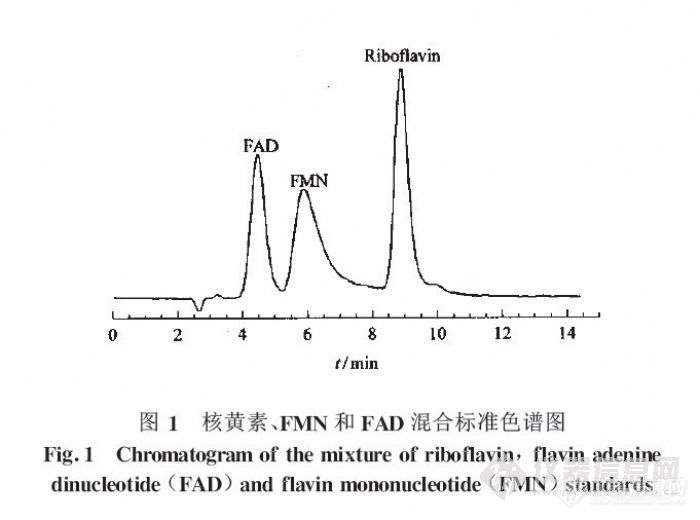
高效液相色谱法测定大鼠血浆和全血中核黄素的含量韦京豫, 郭长江, 杨继军, 蒋与刚, 李云峰, 徐琪寿(军事医学科学院卫生学环境医学研究所,天津)摘要:为了直接反映核黄素营养状况对血中核黄素水平的影响,建立了高效液相色谱测定大鼠血浆及全血中核黄素含量的方法。采用Diamonsil C18色谱柱250mmx4.6mm i.d.5um)分离,以甲醇5mol/l乙酸铵(体积比为1.2ml/min)为流动相,流速1.2ml/min,荧光检测器检测(激发波长450nm,发射波长:520nm)。样品经乙腈、三氯甲烷处理后进样分析。核黄素测定的线性范围5-200nmol/l,最低检测限为2.5nmol/l(s/n=2),日内测定的峰面积的相对标准偏差(RSD)为1.2%,日间测定的RSD=4.3%。核黄素在血浆样品中的加标回收率为97.0%-104%,在全血样品中的加标回收率为97.4%-104.4%.关键词:高效液相色谱法;核黄素;血浆;全血;大鼠http://ng1.17img.cn/bbsfiles/images/2012/07/201207241234_379356_2355529_3.jpg

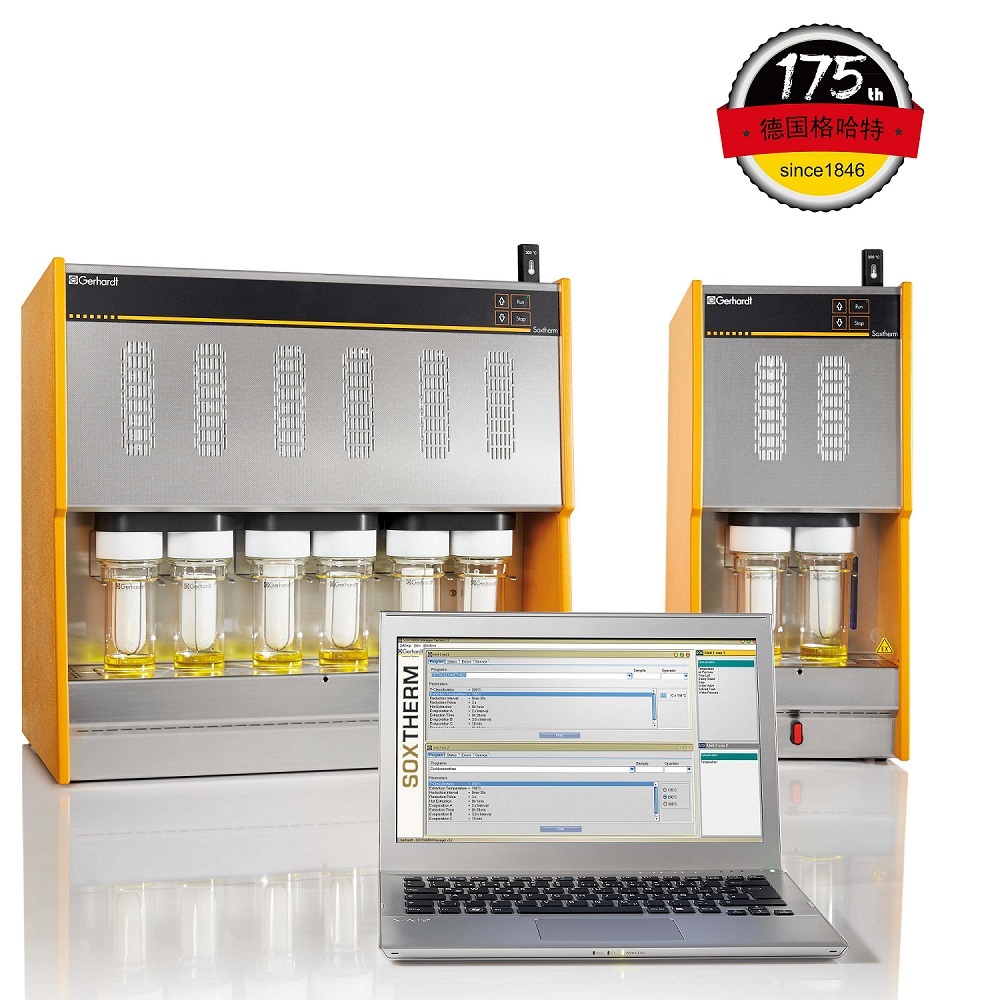
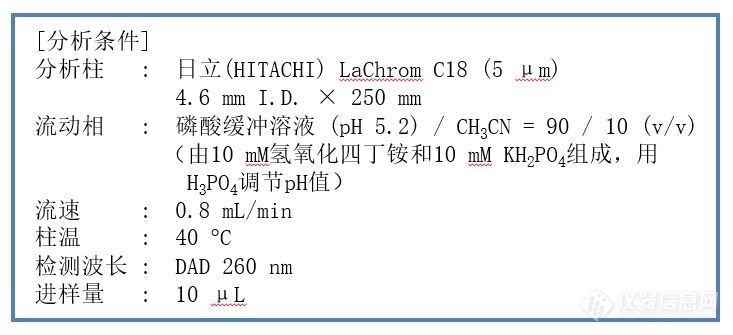


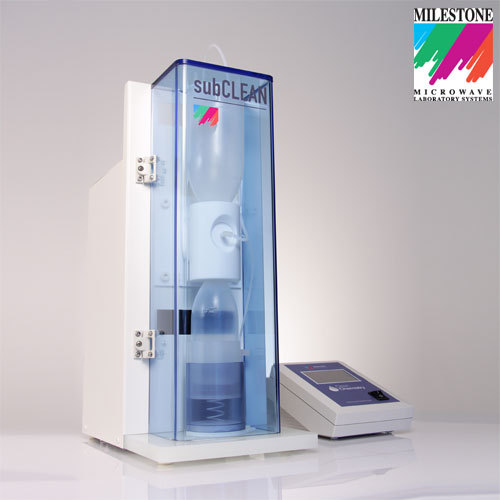
 400-838-7877
400-838-7877
 留言咨询
留言咨询

 留言咨询
留言咨询

 400-860-5168转4446
400-860-5168转4446
 留言咨询
留言咨询

